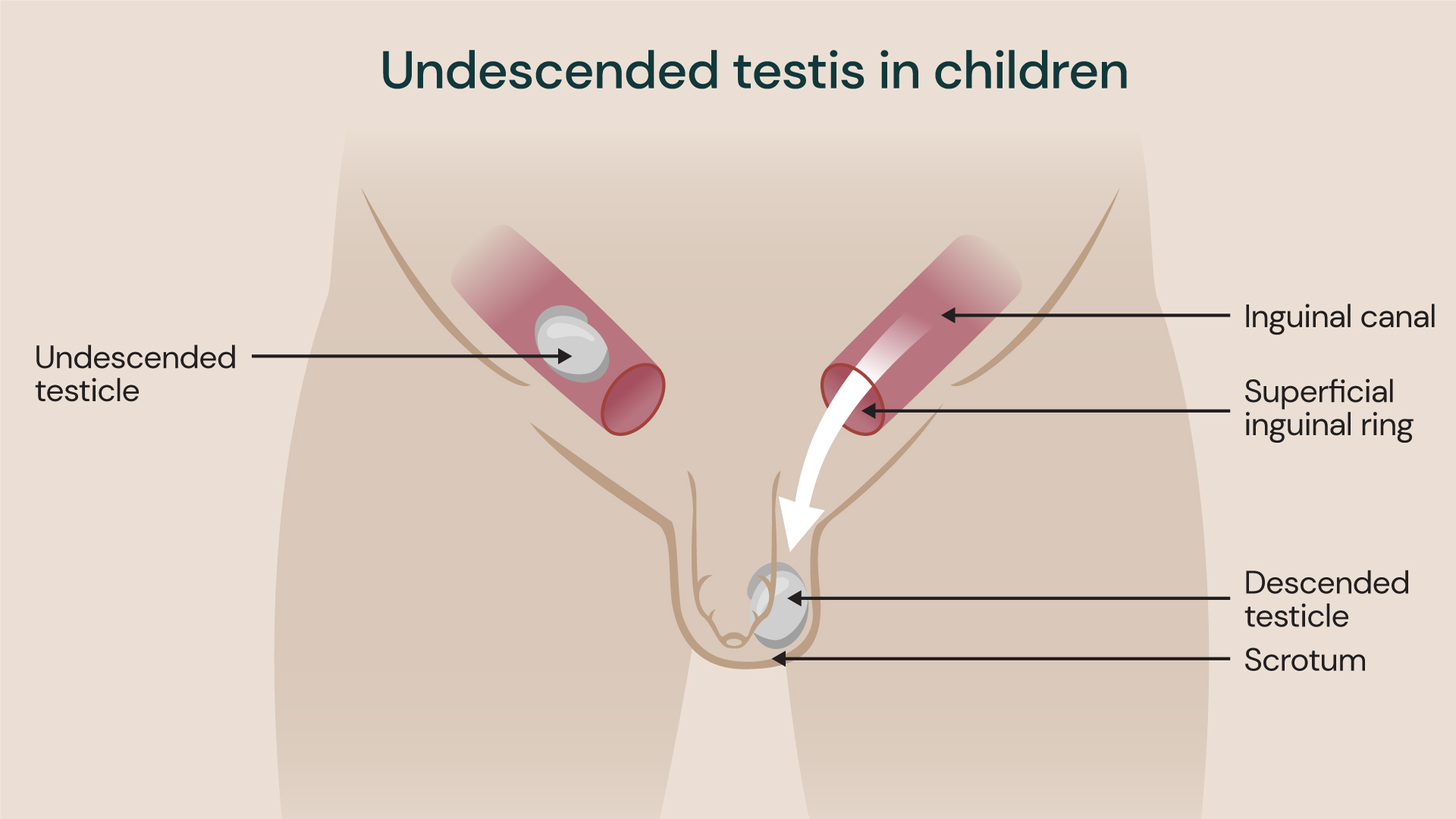What are undescended testicles?
Undescended testicles (Cryptorchidism) are a common congenital condition that occurs when the testicles are not in their usual place inside the scrotum.
Testicles form in the abdomen during fetal development. During the last few months of development, the testicles usually descend gradually from the abdomen through a canal in the groin, into the scrotum. However, sometimes this doesn’t happen.
It’s estimated that around 1 in every 25 boys is born with at least one undescended testicle. In many cases, there’s no need for treatment as the testicles will descend naturally within the first three months after a baby is born.
However, around 1 in 100 male born babies will require treatment for an undescended testicle.
Undescended testicles symptoms
An undescended testicle is usually detected by not seeing or feeling a testicle where it should be in the scrotum. It doesn’t tend to cause any other noticeable symptoms.
For this reason, most cases are detected shortly after birth when your baby is given a physical examination.

An undescended testicle is usually detected by not seeing or feeling a testicle where it should be in the scrotum.
How to check for undescended testicles
The best way to check for an undescended testicle is with a physical examination. Your doctor should be able to gently palpate (examine by touch) the scrotum to feel the testicle inside.
If this is missing, or there are any unusual swellings that don’t feel right, it’s a good idea to get checked by a specialist.
What causes undescended testicles?
So, what causes undescended testicles (also known as cryptorchidism)? Unfortunately, in most cases, it’s not known why some children are born with undescended testicles and others aren’t.
However, research has shown that babies who are born prematurely (before 37 weeks gestation) are more likely to be affected.
Complications of cryptorchidism
Children who have undescended testicles and don’t have treatment are at greater risk of experiencing several complications. One of these is fertility problems. This is because undescended testicles that aren’t brought into the scrotum at a young age may not produce good sperms.
Undescended testicles have also been associated with an increased risk of testicular cancer. In fact, people with undescended testicles are three times more likely to develop testicular cancer than those whose testicles descended either at birth or shortly after. Unfortunately if diagnosis of pathology (like cancer) is often delayed if the testis are not in the scrotum as they are not easy to feel.
Some children have what is known as a retractile testicle. This is where the testicle moves back and forth between the scrotum and groin and occurs due to a muscle reflex. This is fairly normal and over time, the testicles should settle into a permanent position in the scrotum.
Hypospadias and cryptorchidism
Some studies have suggested that undescended testicles, alongside a condition called hypospadias, are signs of something known as testicular dysgenesis syndrome — a health concern that can impair fertility.
Hypospadias is a birth defect in which the opening of the urethra isn’t located at the tip of the penis. Instead, it is usually found on the underside of the penis, or occasionally between the anus and scrotum. Again, this is a problem that occurs during fetal development and isn’t usually detected until the baby is born.
Undescended testicle treatment
If your child’s testicles still haven’t descended by the time they are three months old, they will almost certainly be referred for surgery.
Most of the undescended testis are felt in the groin and could be brought down into the scrotum by straight forward surgery.
If the testicles can’t be felt in the groin, it may be that your paediatric specialist recommends minimally-invasive, keyhole surgery (laparoscopy) to see if the testicles are located inside the abdomen, and in these group of children often two surgery is needed to bring the testis down into scrotum.
Both procedures are performed under general anaesthetic, meaning that your child will be asleep for the duration of the surgery. Recovery is usually fairly fast and straightforward, provided that you follow all of the post-surgical instructions provided by your surgeon.
Ideally, surgery to correct undescended testicles should take place before your child reaches 12 months old. This can help counteract the risk of fertility problems and help early pick up of testicular cancer in future.
Locations
Our specialists offer treatment for undescended testicles at the following locations
Discover our children's urology experts
Based at the state-of-the-art children’s hospital, Evelina London, we offer a calm, comforting environment, where we put your child first while delivering the very highest levels of clinical excellence, quality and care.
Meet our team of renowned pediatric urologists. From urinary health to intricate procedures, our specialists are dedicated to delivering personalised care tailored to your child’s needs.
